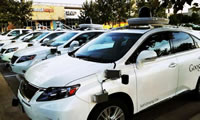New US Robotics Roadmap calls for increased regulations, education and research
 From Phys.org: A new U.S. Robotics Roadmap released Oct. 31 calls for better policy frameworks to safely integrate new technologies, such as self-driving cars and commercial drones, into everyday life. The document also advocates for increased research efforts in the field of human-robot interaction to develop intelligent machines that will empower people to stay in their homes as they age. It calls for increased education efforts in the STEM fields from elementary school to adult learners
From Phys.org: A new U.S. Robotics Roadmap released Oct. 31 calls for better policy frameworks to safely integrate new technologies, such as self-driving cars and commercial drones, into everyday life. The document also advocates for increased research efforts in the field of human-robot interaction to develop intelligent machines that will empower people to stay in their homes as they age. It calls for increased education efforts in the STEM fields from elementary school to adult learners
The roadmap's authors, more than 150 researchers from around the nation, also call for research to create more flexible robotics systems to accommodate the need for increased customization in manufacturing, for everything from cars to consumer electronics
The goal of the U.S. Robotics Roadmap is to determine how researchers can make a difference and solve societal problems in the United States. The document provides an overview of robotics in a wide range of areas, from manufacturing to consumer services, healthcare, autonomous vehicles and defense. The roadmap's authors make recommendation to ensure that the United States will continue to lead in the field of robotics, both in terms of research innovation, technology and policies. Cont'd...
Comments (0)
This post does not have any comments. Be the first to leave a comment below.
Featured Product

